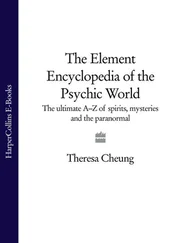That attitude cost them their lives. On a bright summer day in 1419, a group of Hussites, led by the former monk Jan Želivský, stormed New Prague’s town hall (on the square that is today known as Charles Square). Furious about the counsellors’ unwillingness to negotiate with them, the Hussites drove 14 municipal bureaucrats, including the burgomaster himself, up to the gallery on the top of the Town Hall’s tower, which was more than 70 meters tall.
There, the poor Catholics were mercilessly thrown out. To make sure (hey would cause no more trouble, the Hussites had even erected lances and spears at the spot where the poor fellows landed. “The enemies of truth were seized by great fear,” a chronicler wrote, and King Václav had no other choice than to accept the new counsellors, chosen by the Hussite rebels. As a result, Prague was totally controlled by anti-Catholic rebels, and defenestration had proved to be an effective political weapon.
In September 1483, another defenestration took place. Except for the scene — the tower of the Old Town’s city hall replaced the tower in the New Town — this was basically a repetition of the first one (Catholics hurled into the air by furious Hussites), so it’s usually not counted as a real defenestration. The incident that has earned itself the title “Second Historic Defenestration” happened only 199 years after the first, but its political impact was so strong that it practically changed the course of history in Bohemia and Moravia.
The Second defenestration was actually triggered in 1526, when Archduke Ferdinand of Austria was elected Czech king. Considering that the majority of the Czech nobilityand gentry were Protestants (the Vatican would probably have used the term “extremist troublemakers” here), it might seem strange that they chose a member of the super-Catholic Habsburg dynasty as the head of their state, but, unfortunately, they were not the last Czech elites to suffer from a lack of political providence (see: Communism).
As expected, the relations between the Catholic king and the Czech nobility steadily grew more and more embittered. In May 1618, the Czechs had had enough.
Just as the Hussite rebels 199 years earlier had stormed New Prague’s town hall, the members of the Czech gentry and nobility now broke into the royal quarters on third floor of the Prague Castle’s Ludvík wing. There, the governors Jaroslav Bořita and Vilém Slavata were quickly overpowered, and then mercilessly slung out of the window. Historians differ when it comes to the exact spot where the two imperial bureaucrats actually landed (was it on a shack over the latrine, or in the moat?), but in any case, both fellows survived the assault.

Photo © Terje B. Englund
However, the Second Defenestration was so successful that it encouraged the Czech gentry to go a step further: to kick the AustrianFerdinand II from the Czech throne and elect the Protestant prince Friedrich of Pfalz as king instead. This shuffle was, as one might expect, met with extremely little sympathy at the imperial court in Vienna. Furious about the rebellion, Ferdinand sent a huge army to Prague to teach the impudent Czechs a lesson. On November 8, 1620, the Protestants were beaten into their boots in the disastrous Battle of White Mountain.
The Second Defenestration, in other words, heralded one of the most significant political changes in Czech history. Bohemia and Moravia were essentially downgraded to provinces in the Habsburg Empire, a situation that lasted, under varying pressure from Vienna, right up until 1918, when Czechoslovakia’s First Republicwas founded.
The fact that the third and last defenestration was a proper defenestration, and not a tragic suicide, was established only in March 2002, precisely 54 years after Minister of Foreign Affairs, Jan Masaryk, was found dead early one morning in the courtyard of the Černín Palace, the imposing baroque palace where the Foreign Office resides. Nearly 14 meters above the dead minister, in Masaryk’s private apartment, investigators found an open window and wild disorder.
Half-empty liquor bottles and boxes with tranquillizers were strewn about the floor, and on the minister’s night table, there were two books — a closed Bible, and an open Švejk. The subsequent autopsy confirmed that Masaryk was killed instantly by the impact, and that both of his heels were crushed. To the investigators from StB — the secret police (see: Lustration) — the conclusion was unambiguous: Jan Masaryk had committed suicide.
The verdict was immediately met with massive disbelief among common Czechs. How could “Honza” Masaryk, son of Czechoslovakia’s first president Tomáš G. Masarykand, thanks to his witty and biting radio speeches from London during the war, the country’s most popular politician, leave his people when they needed him most?
Two weeks earlier, the communists had taken power in Czechoslovakia. Fear and uncertainty about the future prevailed. Thousands of democratically-minded Czechs had fled the country (see: Emigrants), and Masaryk, as the single non-communist member of Klement Gottwald’s government, was the last hope for those who had decided to stay. True, people close to Masaryk later recounted that he had been very depressed in the days prior to his death, but still: in this fateful hour, Masaryk could not have died by his own will. He must have been killed!
The mysterious death of Jan Masaryk was thoroughly re-investigated both during the Prague spring’s thaw and after the Velvet Revolution. The conclusion remained unchanged: suicide. In the middle of the 1990s, however, things started to happen. The special police commission established to document crimes committed by the communist regime ascertained two important facts: on the night when Masaryk died, a group of unknown persons forced themselves into his apartment in the Černín Palace. And secondly, Masaryk had not fallen from the window, but from (he cornice, several feet away from the window. Could Masaryk have tried to escape the intruders by climbing out on the cornice, where he slipped and fell to an accidental death?
A fairly convincing answer to this question was presented in March 2002 by a professor in the somewhat obscure discipline of biomechanics. After several months of experiments, the renowned scientist concluded unambiguously that Masaryk had been killed — or defenestrated.
Why? If Masaryk — at 61, somewhat corpulent, soggy and out of shape — had jumped consciously and of his own free will, he would allegedly have landed about 70 centimetres from the building wall. The distance between the wall and the place where the body was found measured about 2.2 meters. Add the fact that the body didn’t rotate during the fall, and the only explanation, according to the professor, is that one, or more likely, two persons pushed Masaryk to his death.
This explains how Masaryk died, but it’s not very likely, that we will learn any time soon who committed the crime. The Czechoslovak communists are probably innocent. To them, Masaryk’s presence in the government was an enormous political victory, and they had no reason to liquidate their one and only democratic alibi. There are, though, some signs pointing to Moscow and the NKVD — the forerunner of the KGB — but it’s foolish to expect that institution to open its archives.
Yet it’s tempting to draw some historical parallels. While the First Defenestration in 1419 marked the start of the Hussite Revolution, and the Second Defenestration in 1618 heralded the Thirty Years’ War, the Third Defenestration — Jan Masaryk’s tragic death — symbolized the start of a 41-year communist tyranny. Hopefully, it was the Czechs’ last experience with a totalitarian regime, and also the last time that defenestration was used as a political modus operandi .
Читать дальше


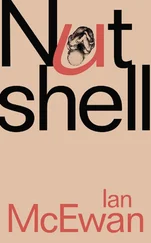
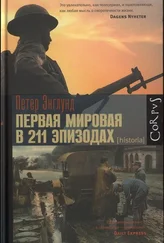

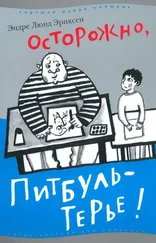
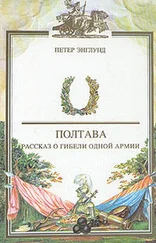

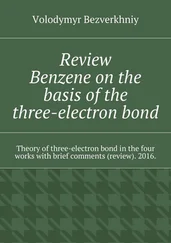
![Theresa Cheung - The Dream Dictionary from A to Z [Revised edition] - The Ultimate A–Z to Interpret the Secrets of Your Dreams](/books/692092/theresa-cheung-the-dream-dictionary-from-a-to-z-r-thumb.webp)


